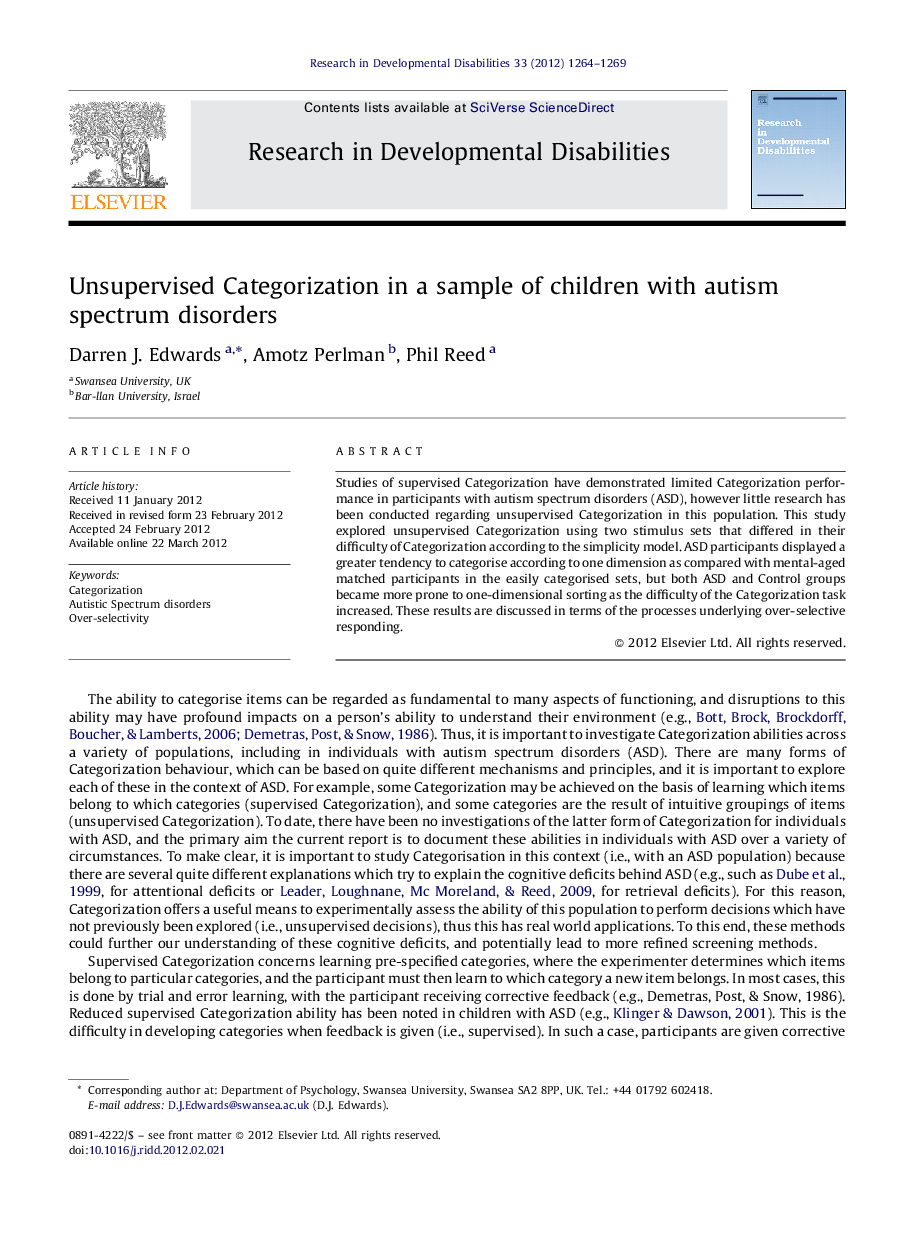| Article ID | Journal | Published Year | Pages | File Type |
|---|---|---|---|---|
| 371603 | Research in Developmental Disabilities | 2012 | 6 Pages |
Studies of supervised Categorization have demonstrated limited Categorization performance in participants with autism spectrum disorders (ASD), however little research has been conducted regarding unsupervised Categorization in this population. This study explored unsupervised Categorization using two stimulus sets that differed in their difficulty of Categorization according to the simplicity model. ASD participants displayed a greater tendency to categorise according to one dimension as compared with mental-aged matched participants in the easily categorised sets, but both ASD and Control groups became more prone to one-dimensional sorting as the difficulty of the Categorization task increased. These results are discussed in terms of the processes underlying over-selective responding.
► Over-selectivity in ASD and a Control group are compared using an unsupervised Categorization task. ► There are more one-dimensional sorts (over-selectivity) in the ‘Easy’ condition, in the ASD group as compared with the Control group. ► Task difficulty increases the number of one-dimensional sorts for both the ASD and the Control groups. ► Unsupervised Categorization can be a useful method in investigating attentional and encoding cognitive deficits in an ASD population.
